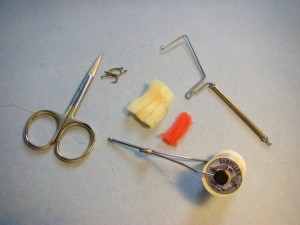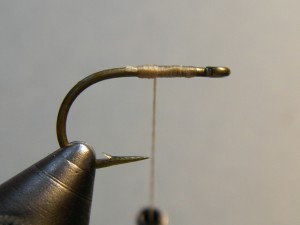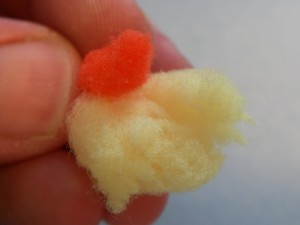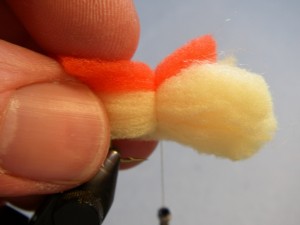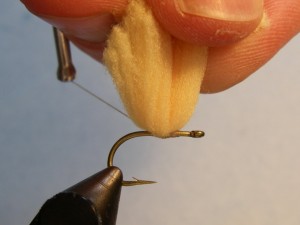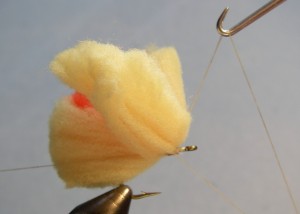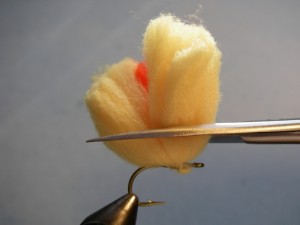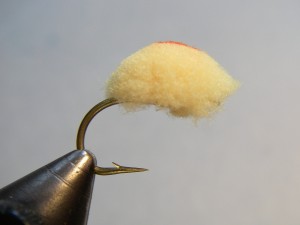Originally this pattern was designed by Dan Blanton for saltwater use, but over the years it has been adopted by freshwater anglers for its versatility and effectiveness. This pattern is one of the must-have flies that will work in various colors for various species – if it is a predator, it will eat the Whistler.
Beyond pike and musky, I have found various sizes and colors to work well for trout, bass and salmon. The color choices are endless and this particular scheme is a favorite of salmon when they first are in the river. Anglers using lures for these fresh salmon have an affinity for Storm Thunderstick lures in Fire Tiger and it’s effectiveness has led me to tying this fly pattern in a similar color scheme. Make sure your fly box is filled with yellow/red, white/red, chart./olive, olive/yellow, orange/olive, and gray/white to be
equipped and ready for various species in various situations.
Like the name suggests, there is a liberal amount of flash tied into the tail that not only provides flash, but also action.
The bead-chain eyes “whistle” as you cast the fly through the air. The physical weight of this pattern makes it easy to cast and it retains little water helping to keep it light weight. The thin profile of this pattern causes it to sink slowly which is ideal for shallow water and floating lines while it allows for decent penetration of the water column when fished with sink-tips. Further, you can mitigate the bead chain eyes with other, heavy sinking eyes if you are looking to get the fly even deeper.
Recipe:
Hook: Gamakatsu B10S, TMC 811S, 600SP; Size: 3/0 – 6
Thread: Fly Master + or Uni 3/0 – Chartreuse
Tail: Flashabou – A mix of Kelly Green, Green Glow-in-the-dark, and Chartreuse
Body: Bucktail – Flo. Orange, Kelly Green and Black
Wing: Chartruese Grizzly Saddle hackle. Krystal Flash – Chartreuse
Throat: Red Dubbing (I like Pseudo Seal, Angora Goat or Simi-Seal) or Red Chenille
Collar: Highlander Green Schlappen
Eyes: X-Large Bead Chain – Stainless Steel
Tying Instructions
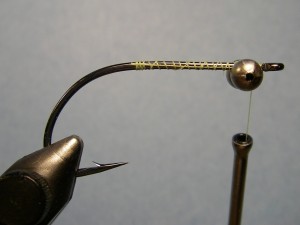 Step 1. Wrap a thread base to above the hook point and take thread back to
Step 1. Wrap a thread base to above the hook point and take thread back to
behind the hook and tie in bead-chain eyes on the underside of the hook.
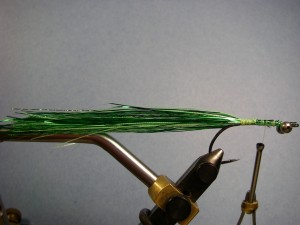 Step 2. Tie in Flashabou tail – 3 times hook shank length. [The pictured fly’s
Step 2. Tie in Flashabou tail – 3 times hook shank length. [The pictured fly’s
tail is a little shorter which was done for photographing reasons]
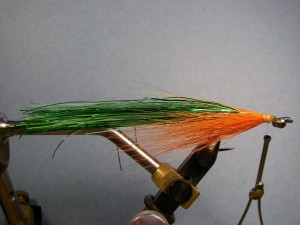 Step 3. Invert hook and tie in orange bucktail so tips extend one hook shank length behind the bend
Step 3. Invert hook and tie in orange bucktail so tips extend one hook shank length behind the bend
of the hook. Trim excess and wrap in between butts to get a good purchase and secure.
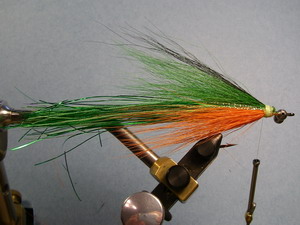 Step 4. Return hook to normal position. Tie in top bucktail to same length as
Step 4. Return hook to normal position. Tie in top bucktail to same length as
bottom section, but slightly denser to ensure the fly swims right side up. Majority
of the top color is Kelly Green with some black on top to match the color scheme.
Trim excess and secure. Tie in a few strands of Krystal Flash on each side.
Step 5. Prepare saddle hackle by trimming some of the fibers, but leaving the butts to
allow for a secure mount. Pinch the stem of the feather flat with smooth faced hemostats or
pliers to keep the feather from rotating when mounted. Mount on each side of the fly with
natural feather curves bending in. The tips should be the same length as the bucktail. Tie in
additional Krystal Flash over the hackle wings extending aprox. the same length as the hackle.
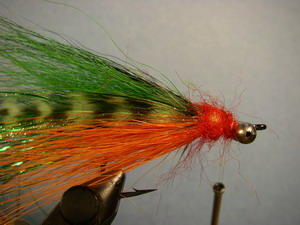 Step 6. Loosely dub over the thread wraps with some red dubbing. This not only helps to protect the
Step 6. Loosely dub over the thread wraps with some red dubbing. This not only helps to protect the
materials, but also gives an appearance of gills. The original pattern was tied with red chenille, but I
prefer the low profile of dubbing which also makes for a textured surface to tie in the schlappen feathers.
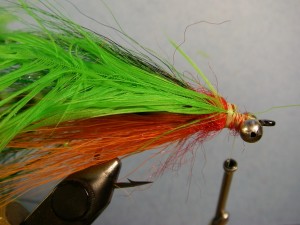 Step 7. Tie in 2 or 3 large Schlappen feathers by their tips between the dubbing and eyes. Be sure
Step 7. Tie in 2 or 3 large Schlappen feathers by their tips between the dubbing and eyes. Be sure
to tie schlappen in where fibers are long enough (aprox. just larger than a hook gape).
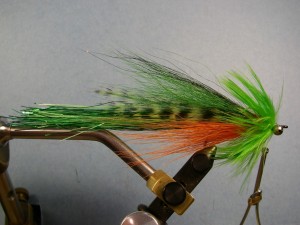 Step 8. Wind all the feathers together forward to just behind the eyes and tie down. Whip finish and tie off.
Step 8. Wind all the feathers together forward to just behind the eyes and tie down. Whip finish and tie off.
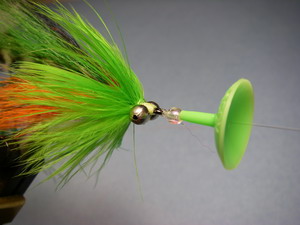 Optional: When fishing, try using a Wiggle Fin Action Disc on the line in front of the fly. This plastic
Optional: When fishing, try using a Wiggle Fin Action Disc on the line in front of the fly. This plastic
dish creates a unique wobble and imparts a lot of action when pulled slowly. The resulting wiggle/motion
of the fly and the flashabou tail is seductive. Click here for the Wiggle Fin website.

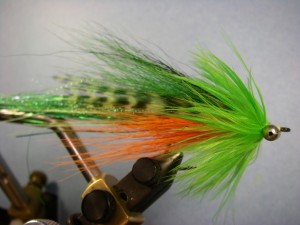
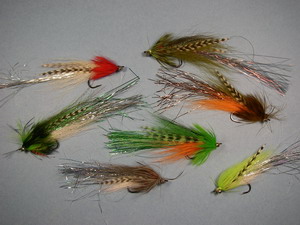
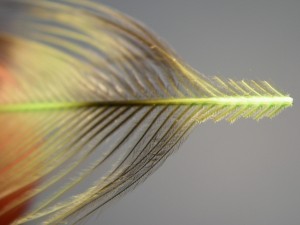
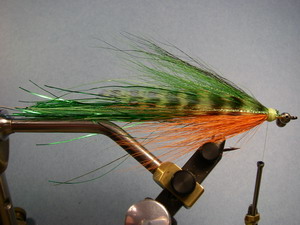
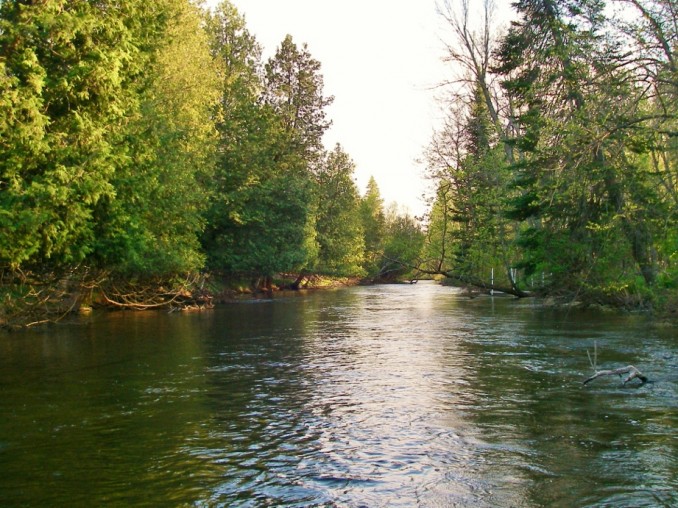
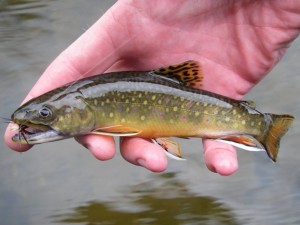
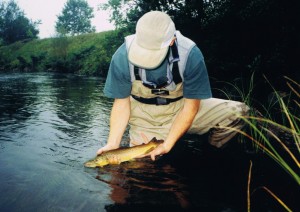
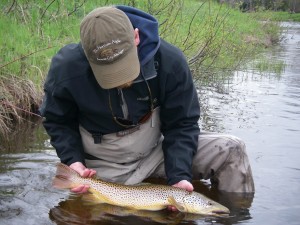
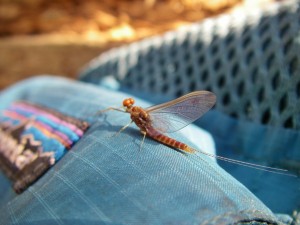
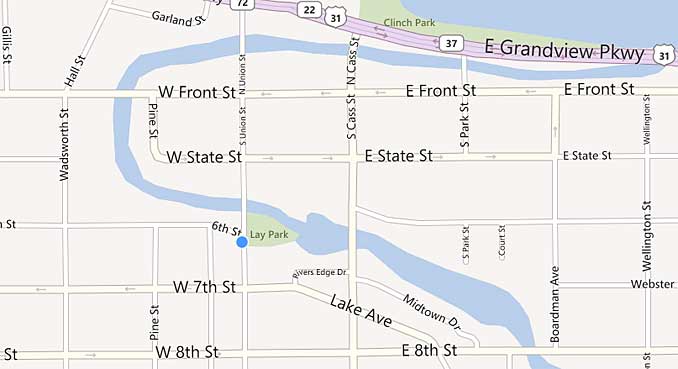
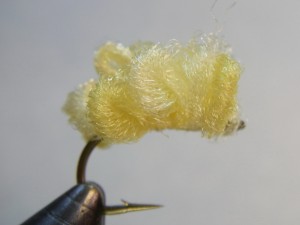 This fly represents a clump of eggs released from either a walleye or a sucker, where it gets its name. It is easy to tie and looks very realistic when wet. Do know that if you tie it in oranges and in larger sizes to imitate steelhead or salmon eggs, it will tend to be fairly heavy and can easily drag a bit.
This fly represents a clump of eggs released from either a walleye or a sucker, where it gets its name. It is easy to tie and looks very realistic when wet. Do know that if you tie it in oranges and in larger sizes to imitate steelhead or salmon eggs, it will tend to be fairly heavy and can easily drag a bit.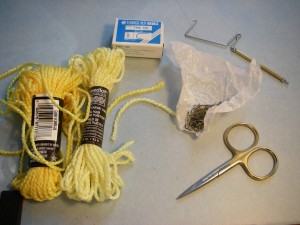 Hook: TMC 105 #6-10, Gamakatsu C14S #8 -12, TMC 2457 #8-12
Hook: TMC 105 #6-10, Gamakatsu C14S #8 -12, TMC 2457 #8-12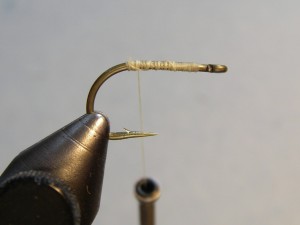 Step 1.Insert hook into vise and wrap a thread base from the hook eye to above the hook barb.
Step 1.Insert hook into vise and wrap a thread base from the hook eye to above the hook barb.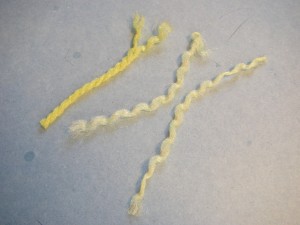 Step 2. Take about 5” of each color thread and separate the two strands, using one of each color.
Step 2. Take about 5” of each color thread and separate the two strands, using one of each color.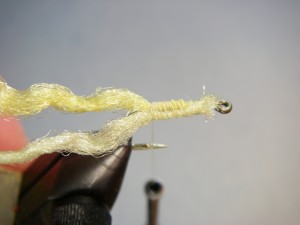 Step 3. Lay the yarn parallel along the hook shank and wrap back towards the bend in the hook.
Step 3. Lay the yarn parallel along the hook shank and wrap back towards the bend in the hook.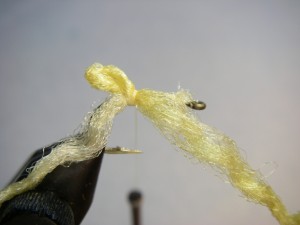 Step 4. Take one strand of yarn and twist in your fingers stopping just before the
Step 4. Take one strand of yarn and twist in your fingers stopping just before the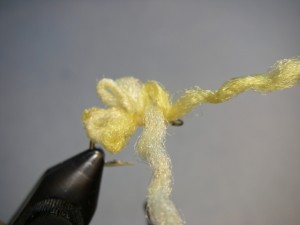 Step 5. Repeat with both strands/colors and vary it up a little for a realistic look.
Step 5. Repeat with both strands/colors and vary it up a little for a realistic look.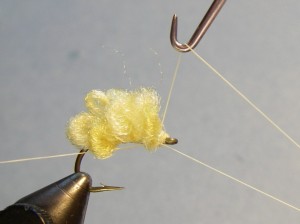 Step 6. Whip finish.
Step 6. Whip finish.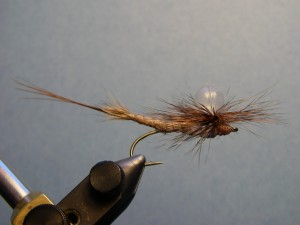
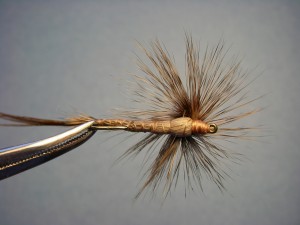
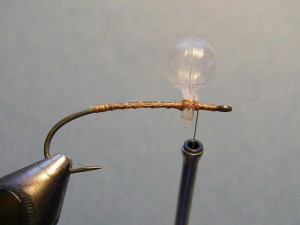 Step 1. Put the hook in the vise and wrap a base layer of thread from behind the eye to above the
Step 1. Put the hook in the vise and wrap a base layer of thread from behind the eye to above the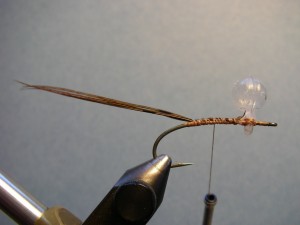 Step 2. Trim off a 4-5 pheasant tails fibers and tie in behind
Step 2. Trim off a 4-5 pheasant tails fibers and tie in behind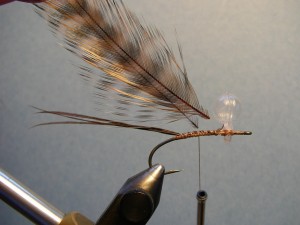 Step 3. Select two large hackle feathers. Trim some of the barbs to stubs at the
Step 3. Select two large hackle feathers. Trim some of the barbs to stubs at the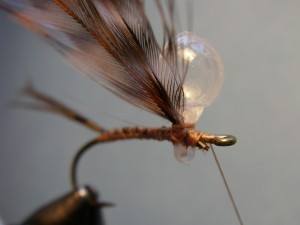 Step 4. Tie in at the base of the uni-bobber with the underside/convex side of the
Step 4. Tie in at the base of the uni-bobber with the underside/convex side of the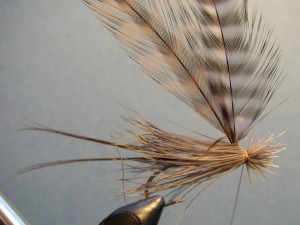 Step 5. Select a long clump of deer hair that is at approximately the diameter of a
Step 5. Select a long clump of deer hair that is at approximately the diameter of a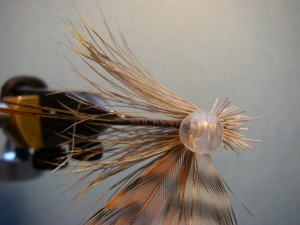 Step 6. Even the hair so it is on both sides of the hook shank.
Step 6. Even the hair so it is on both sides of the hook shank.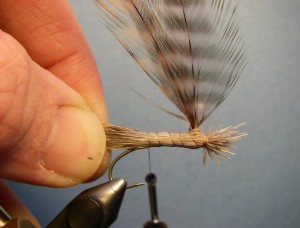 Step 7. Gently wrap the thread backwards while holding the extended deer hair
Step 7. Gently wrap the thread backwards while holding the extended deer hair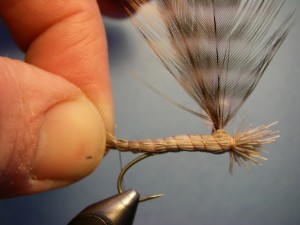 Step 8. At the end, make two or three wraps a little more pressure, then advance the thread forward
Step 8. At the end, make two or three wraps a little more pressure, then advance the thread forward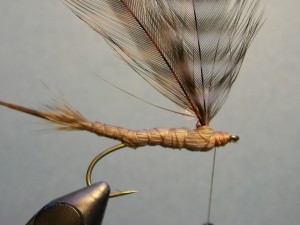 Step 9. Trim the butts of the deer hair and tie down the head covering any deer hair that is exposed.
Step 9. Trim the butts of the deer hair and tie down the head covering any deer hair that is exposed.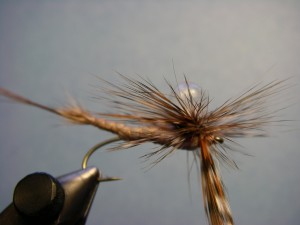 Step 10. Take both the feathers at the same time and wrap them under the bulbous uni-bobber
Step 10. Take both the feathers at the same time and wrap them under the bulbous uni-bobber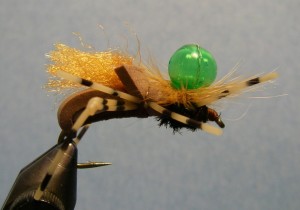 The idea for this fly was borrowed from a fly called a Thing-A-Ma-Bug which uses non-glow in the dark
The idea for this fly was borrowed from a fly called a Thing-A-Ma-Bug which uses non-glow in the dark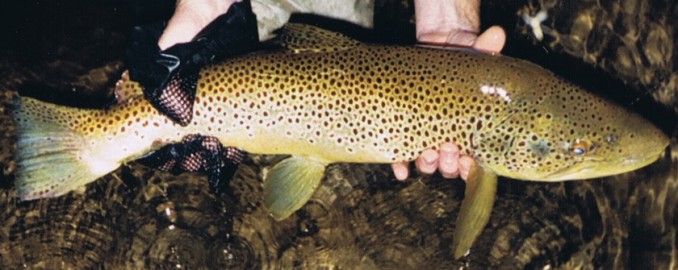
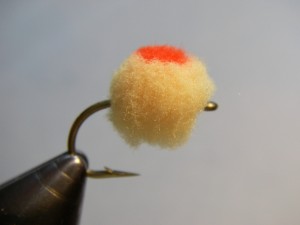 The typical material for tying Glo Bugs is Glo Bug Yarn or Egg Yarn and many, including myself have found tying nice, round looking egg flies is difficult when using this material. In the mid-1990’s a new material, McFly Foam yarn, hit the market and tying nice, round eggs has been easier ever since. It’s available in huge array of colors and anglers can mix them up or incorporate dots very easily for a custom combination.
The typical material for tying Glo Bugs is Glo Bug Yarn or Egg Yarn and many, including myself have found tying nice, round looking egg flies is difficult when using this material. In the mid-1990’s a new material, McFly Foam yarn, hit the market and tying nice, round eggs has been easier ever since. It’s available in huge array of colors and anglers can mix them up or incorporate dots very easily for a custom combination.